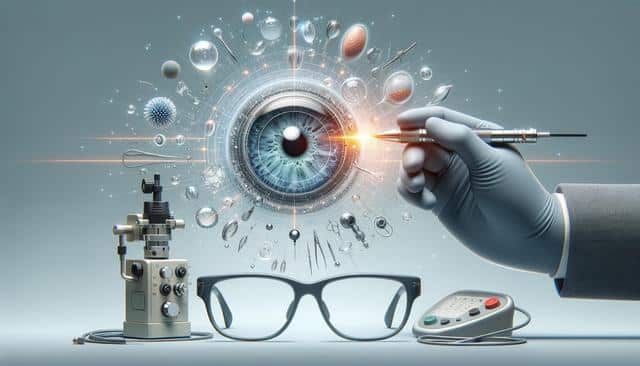A Clearer Look at LASIK: A Guide to Laser Eye Surgery Benefits and Considerations
Considering a long-term alternative to glasses or contact lenses? This guide explores how LASIK laser eye surgery may help improve vision by reshaping the cornea, with insights into its potential benefits, technology, and what to expect during the process.

Understanding LASIK: The Basics
Laser-Assisted In Situ Keratomileusis, commonly known as LASIK, is a popular surgical procedure that aims to correct common vision problems such as myopia, hyperopia, and astigmatism. This innovative technique involves using a precise laser to reshape the cornea, thereby improving the eye’s ability to focus light directly onto the retina. As one of the top options available for vision correction, LASIK has gained popularity due to its efficiency and effectiveness. For those tired of the daily hassle of glasses or contact lenses, this procedure offers a compelling alternative.
Potential Benefits of LASIK
Undergoing LASIK surgery brings numerous benefits that can significantly enhance one’s quality of life. Some of the most notable advantages include:
- Quick Recovery Time: Most patients experience improved vision within 24 hours of the procedure, with minimal downtime required.
- Long-Lasting Results: LASIK provides permanent correction for most patients, reducing the need for corrective lenses.
- Enhanced Vision: Many patients achieve 20/20 vision or better, allowing them to enjoy everyday activities without visual aids.
The exceptional quality of the results is often what draws individuals to consider LASIK as a solution for their vision needs.
LASIK Technology: The Science Behind the Surgery
The technology behind LASIK has evolved significantly over the years, contributing to its current reputation for safety and precision. The procedure generally involves two types of lasers: the femtosecond laser, used to create a thin flap on the cornea’s surface, and the excimer laser, which reshapes the corneal tissue underneath. This combination allows for highly accurate and customizable corrections tailored to each patient’s unique vision profile. Furthermore, advancements in wavefront-guided technology offer an added level of precision by mapping the eye’s surface in detail before surgery, ensuring outstanding outcomes.
Preparing for LASIK: What to Expect
Before undergoing LASIK surgery, patients need to undergo a comprehensive eye examination to determine their suitability for the procedure. During this assessment, factors such as corneal thickness, pupil size, and overall eye health are evaluated. Patients should also discontinue wearing contact lenses for a prescribed period before the surgery to ensure accurate measurements. On the day of the procedure, the surgery itself typically takes only about 15 minutes per eye, with minimal discomfort reported. Post-operative care involves using prescribed eye drops and following specific guidelines to facilitate the healing process.
Considerations and Risks
While LASIK offers numerous benefits, it is essential to consider potential risks and limitations. As with any surgical procedure, there is a possibility of complications, although they are relatively rare. Some patients might experience temporary side effects such as dry eyes, halos, or glare, which usually resolve over time. It is crucial for individuals to have realistic expectations and to understand that results may vary based on individual eye conditions. Consulting with a qualified ophthalmologist can provide a clearer understanding of the risks associated with LASIK and help patients make informed decisions.
Conclusion
LASIK laser eye surgery presents an attractive option for those seeking a long-term solution to vision correction. By reshaping the cornea, the procedure offers significant improvements in vision quality with remarkable precision and efficiency. While considering LASIK, it is vital to weigh the potential benefits against the risks and to consult with a trusted eye care professional to determine its suitability. For those eligible, LASIK can be a life-changing procedure that brings a new perspective on visual freedom.